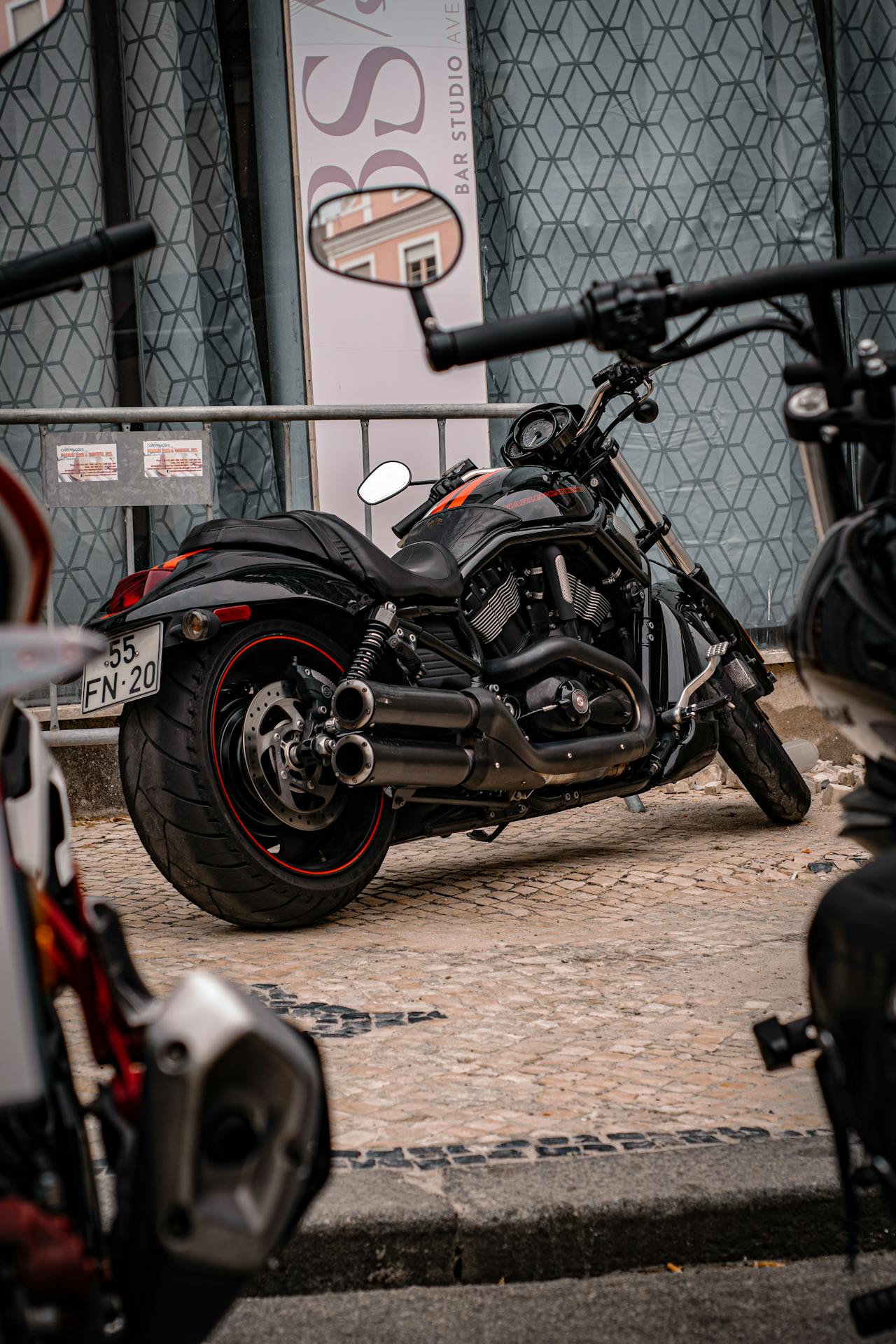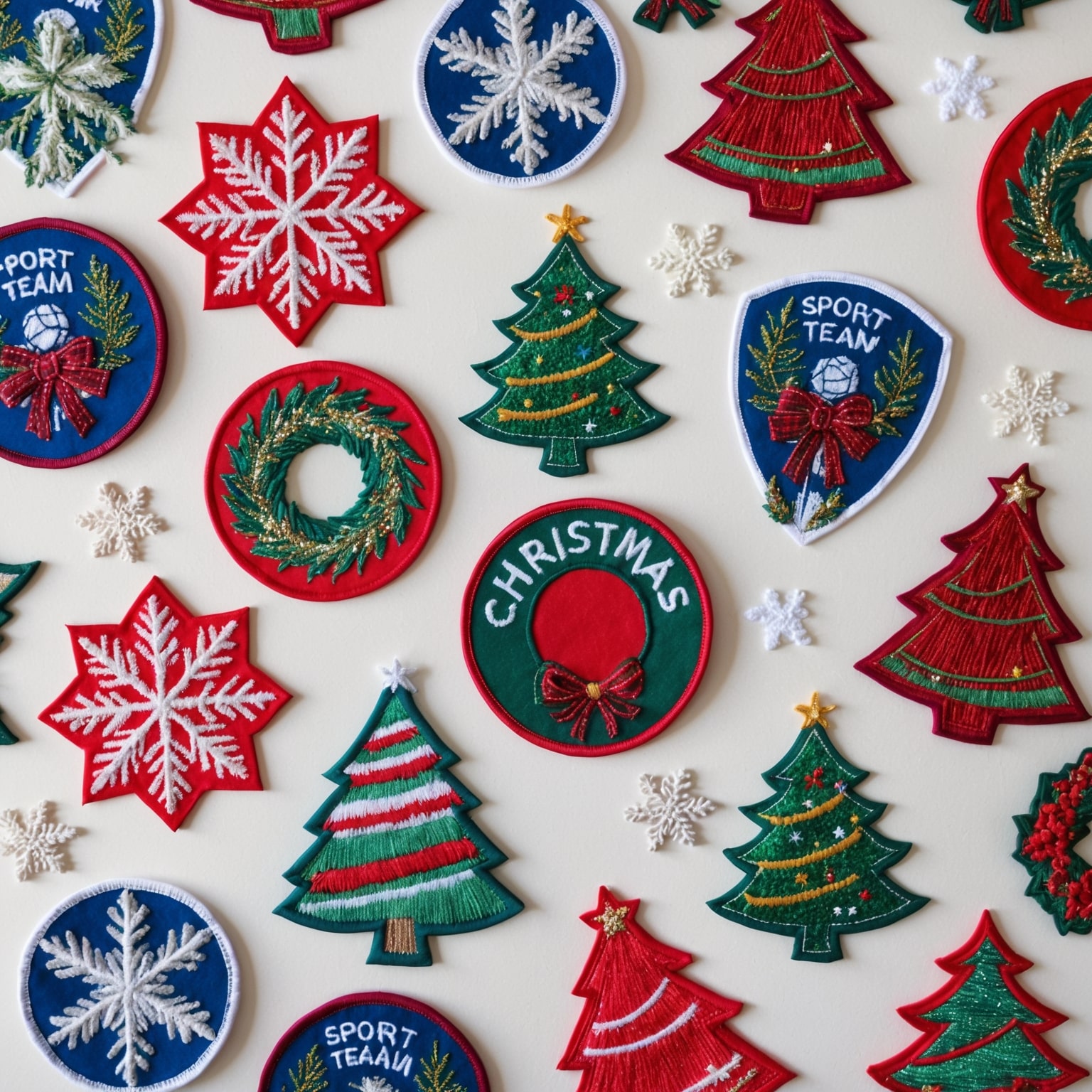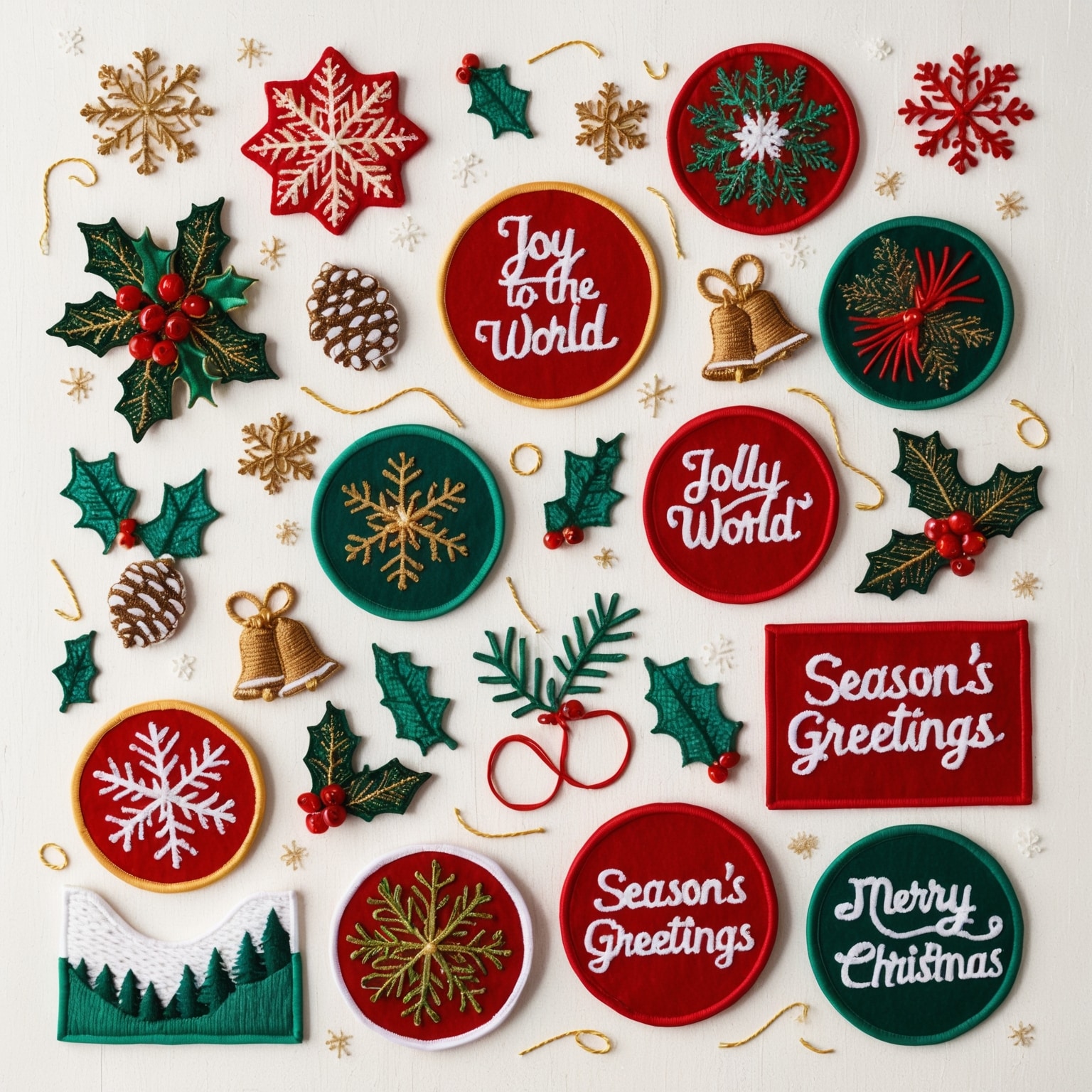The Significance of Biker Patches
Biker patches are more than just decorative elements on a motorcycle jacket; they are rich symbols of identity, allegiance, and philosophy within the motorcycle club (MC) community. These patches, often vibrant and intricately designed, serve as a visual language that communicates a member’s affiliation, status, and the values of their club. For outsiders, the meanings behind these patches can be mysterious, but for members, they are a source of pride and a badge of honor.
This comprehensive guide will delve into the world of biker patches, exploring the meanings behind their colors and symbols. We will examine the different types of patches, the significance of various designs, and the cultural importance of these insignias within the motorcycle club community. Whether you’re a rider looking to understand more about this tradition or simply curious about the rich symbolism, this article will provide an inside look into the world of biker patch insignia.
1. The Origin and Evolution of Biker Patches
How did biker patches originate, and how have they evolved over time?
Solution: The tradition of wearing patches in the motorcycle community can be traced back to the post-World War II era. Returning soldiers, who had experienced the camaraderie and brotherhood of military life, sought to recreate that sense of belonging in civilian life. Many turned to motorcycles as a form of freedom and adventure, leading to the formation of motorcycle clubs.
Early Days: In the early days, motorcycle clubs were informal groups, but as they grew, members began wearing patches to signify their affiliation. These early patches were often simple, featuring the club’s name and logo.
1950s and 60s: The 1950s and 60s saw the rise of the “outlaw” biker culture, popularized by movies like The Wild One. Clubs outside the American Motorcyclist Association (AMA) began adopting a distinct set of patches known as the “three-piece patch,” consisting of a top rocker, center patch, and bottom rocker.
Modern Era: Today, biker patches have evolved into a sophisticated system of symbols and colors, each with specific meanings. They are used not only to indicate membership but also to convey information about the wearer’s rank, achievements, and beliefs.
The evolution of biker patches reflects the changing culture and values within the motorcycle community, highlighting the importance of these symbols as a means of identity and expression.
2. Understanding the Three-Piece Patch
What is a three-piece patch, and what does it signify?
Solution: The three-piece patch is a hallmark of many motorcycle clubs, particularly those known as “outlaw” or “1%er” clubs. It consists of three distinct parts: the top rocker, center patch, and bottom rocker.
Components of a Three-Piece Patch:
- Top Rocker: This arch-shaped patch typically displays the name of the motorcycle club. It is positioned above the center patch.
- Center Patch: The centerpiece of the three-piece patch often features the club’s logo or emblem. This design is unique to the club and represents its identity and values.
- Bottom Rocker: The bottom rocker usually indicates the club’s territory or chapter location. This can be a city, state, or region.
Meaning: The three-piece patch signifies a full member’s status within the club. It is a symbol of commitment and acceptance into the brotherhood. The structure and design of the patch often denote the club’s alignment with the traditional or outlaw motorcycle club culture.
3. Colors and Their Meanings
How do the colors of biker patches convey specific messages?
Solution: Colors play a crucial role in the symbolism of biker patches. Each color can carry specific meanings, often related to the club’s values, identity, or the personality of its members.
Common Colors and Their Meanings:
- Black: Often associated with rebellion, power, and solidarity. It is a common color in biker patches, representing the outlaw spirit of the motorcycle community.
- White: Represents purity, truth, and peace. White patches can also indicate a club’s commitment to non-violence.
- Red: Symbolizes passion, danger, and courage. Red is often used in patches to convey a club’s boldness and willingness to take risks.
- Gold: Represents wealth, success, and honor. Gold accents in patches can signify high status or achievements within the club.
- Blue: Associated with loyalty, trust, and tranquility. Blue patches may indicate a club’s emphasis on loyalty and unity among members.
- Green: Represents nature, growth, and harmony. Green patches can signify a club’s connection to nature or a focus on environmental values.
The combination of colors and their placement within the patch design can convey complex messages about the club’s ethos and the individual’s role within it.
4. Symbols and Imagery in Biker Patches
What are some common symbols and imagery used in biker patches, and what do they represent?
Solution: Biker patches often incorporate a variety of symbols and imagery that carry specific meanings. These elements can range from simple icons to complex designs, each chosen for its symbolic significance.
Common Symbols and Their Meanings:
- Skulls: A symbol of mortality, danger, and the outlaw lifestyle. Skulls are a popular motif in biker patches, representing a fearless attitude and a rejection of societal norms.
- Wings: Symbolize freedom and the open road. Wings are often associated with the sense of liberation that comes with riding a motorcycle.
- Daggers and Swords: Represent strength, courage, and the willingness to fight for one’s beliefs. These symbols can also signify protection and defense.
- Animals: Various animals, such as eagles, wolves, and lions, are used to represent qualities like bravery, loyalty, and leadership. For example, eagles are often associated with freedom and power.
- Flags: National or regional flags can indicate a club’s origins or the members’ pride in their heritage. They may also represent a club’s commitment to certain values or causes.
- Crosses: Religious symbols, such as crosses, can indicate the club’s spiritual beliefs or the members’ faith.
The choice of symbols in a biker patch is deliberate and meaningful, often reflecting the club’s values, philosophy, or cultural background.
5. Types of Patches and Their Meanings
What are the different types of biker patches, and what do they signify?
Solution: Biker patches come in various types, each serving a specific purpose and carrying distinct meanings. The types of patches worn by a member can indicate their status, role, and achievements within the club.
Types of Biker Patches:
- Back Patches: The large patch worn on the back of a biker’s vest or jacket. It typically includes the three-piece patch components and is the most prominent symbol of the club.
- Front Patches: Smaller patches worn on the front of the vest or jacket. These often include the member’s rank, nickname, or other specific roles within the club.
- Nomad Patches: Worn by members who are not affiliated with a specific chapter and often travel between regions. The term “Nomad” is typically displayed on the patch.
- Prospect Patches: Worn by prospective members who are in the process of becoming full members. These patches often indicate the probationary status of the wearer.
- Honorary Patches: Given to individuals who have made significant contributions to the club but are not full members. These patches can be honorary titles or recognition for specific achievements.
- Event Patches: Created to commemorate specific events, such as rallies, rides, or anniversaries. These patches are often collectible and worn by participants.
Each type of patch serves as a marker of the member’s journey within the club, from prospective status to full membership and beyond.
6. The Role of Patches in Club Hierarchy and Structure
How do biker patches reflect the hierarchy and structure within motorcycle clubs?
Solution: Biker patches are a visual representation of the hierarchy and structure within a motorcycle club. They indicate a member’s rank, role, and responsibilities, helping to establish order and respect within the group.
Club Hierarchy and Patches:
- President: The highest-ranking member, often indicated by a patch that reads “President” along with the club’s name or chapter. The president leads the club and makes executive decisions.
- Vice President: The second-in-command, typically identified with a “Vice President” patch. They support the president and take over in their absence.
- Sergeant-at-Arms: Responsible for maintaining order and enforcing club rules. The “Sergeant-at-Arms” patch signifies this role, often accompanied by symbols of authority, such as crossed weapons.
- Road Captain: Oversees the planning and execution of rides and events. A “Road Captain” patch denotes this leadership position.
- Treasurer: Manages the club’s finances, indicated by a “Treasurer” patch. They are responsible for collecting dues and managing funds.
- Secretary: Handles administrative tasks, such as meeting minutes and correspondence. A “Secretary” patch signifies this role.
- Member: Full members wear patches that indicate their full membership status. These may include additional patches that reflect their contributions or achievements.
The use of these patches helps maintain a clear structure within the club, ensuring that roles and responsibilities are clearly defined and respected.
7. The Process of Earning Patches
What is the process of earning patches in a motorcycle club?
Solution: Earning patches in a motorcycle club is a significant achievement that reflects a member’s dedication, loyalty, and commitment. The process often involves several stages, starting from the initial interest in joining the club to becoming a full-fledged member. The stages and the corresponding patches earned are important aspects of a biker’s journey.
Stages of Earning Patches:
- Prospect Phase: Interested individuals start as prospects. During this period, they wear a “Prospect” patch, indicating that they are not yet full members but are being considered for membership. Prospects often have to prove their dedication by attending meetings, participating in club activities, and assisting full members.
- Hangaround Phase: Some clubs have a “Hangaround” phase before the prospect stage. Hangarounds are individuals who are interested in the club but have not yet been invited to prospect. They often accompany the club in social settings but do not participate in official business.
- Full Membership: After successfully completing the prospect phase, an individual may be granted full membership, which includes receiving the club’s full patch set, including the top and bottom rockers and center patch. This initiation often involves a formal ceremony or ritual.
- Special Achievements: Members can earn additional patches for special achievements, such as participating in significant rides, holding leadership positions, or contributing to the club’s success in various ways.
Earning patches is not just about wearing symbols; it’s about proving one’s loyalty and commitment to the club and its values.
8. The Cultural Significance of Biker Patches
What cultural significance do biker patches hold within the motorcycle community?
Solution: Biker patches are deeply ingrained in the culture of the motorcycle community, serving as symbols of identity, brotherhood, and tradition. They are not merely decorative elements but hold significant cultural value.
Aspects of Cultural Significance:
- Brotherhood and Loyalty: Patches symbolize the close-knit bonds of brotherhood and loyalty among club members. Wearing the club’s patch signifies a strong commitment to fellow members and the club’s ideals.
- Tradition and History: Many clubs have long histories, and their patches reflect this legacy. Patches often commemorate the club’s founding, significant events, and notable achievements, preserving the club’s history for future generations.
- Respect and Recognition: In the motorcycle community, patches are a mark of respect and recognition. They convey a member’s status, achievements, and affiliations, which are respected by other riders and clubs.
- Expression of Identity: For many bikers, patches are a form of self-expression. They allow members to express their personal beliefs, affiliations, and identity within the broader motorcycle culture.
The cultural significance of biker patches extends beyond the individual, reflecting the shared values and traditions of the motorcycle community as a whole.
9. The Use of Colors and Symbols in Different Clubs
How do different motorcycle clubs use colors and symbols to distinguish themselves?
Solution: Different motorcycle clubs use distinct colors and symbols to distinguish themselves from other clubs. These elements are carefully chosen to reflect the club’s identity, values, and culture.
Club Colors and Symbols:
- Color Combinations: Clubs often have specific color combinations that are unique to them. These colors are prominently featured on the patches and are a key aspect of the club’s visual identity.
- Unique Logos: Each club typically has a unique logo or emblem that serves as the centerpiece of their patch design. These logos often incorporate symbols that hold specific meanings for the club members.
- Territorial Markings: Many clubs include territorial markings on their patches, indicating the region, city, or state they represent. This can be a point of pride and identity for the club members.
- Symbols of Affiliation: Some patches include symbols that indicate the club’s affiliations, such as alliances with other clubs or participation in specific biker organizations.
The use of specific colors and symbols helps to create a distinct identity for each club, making them easily recognizable within the motorcycle community.
10. Controversies and Misconceptions About Biker Patches
What controversies and misconceptions surround biker patches, and how do they affect perceptions of motorcycle clubs?
Solution: Biker patches, particularly those associated with “outlaw” or “1%er” clubs, have been the subject of controversy and misconceptions. These patches can sometimes lead to misunderstandings and negative perceptions of motorcycle clubs.
Common Controversies and Misconceptions:
- Outlaw Image: The term “outlaw” is often misunderstood. While some clubs embrace this term to signify their independence from mainstream organizations like the AMA, it does not necessarily mean they are involved in illegal activities. However, the association with the “outlaw” label can lead to negative stereotypes.
- 1%er Patches: The “1%er” patch indicates that the club is part of the 1% of motorcycle clubs that do not conform to the rules of the AMA. This patch has been associated with criminal activity, although many clubs that wear it are law-abiding.
- Public Perception: The general public often misunderstands the significance of biker patches, leading to misconceptions about the nature of motorcycle clubs. This can result in unwarranted fear or prejudice against bikers.
- Media Representation: Media portrayals of motorcycle clubs, particularly in movies and television shows, often focus on negative aspects, reinforcing stereotypes and misconceptions.
Despite these controversies and misconceptions, many motorcycle clubs are community-oriented organizations that focus on brotherhood, charity work, and the love of riding.
11. The Future of Biker Patches
What does the future hold for biker patches, and how might they evolve?
Solution: The tradition of biker patches is likely to continue evolving as the motorcycle community itself evolves. While the core elements of patches may remain, new trends and influences are shaping their future.
Potential Future Trends:
- Digital Integration: As digital technology becomes more prevalent, there may be a trend towards incorporating QR codes or other digital elements into patches, linking to club websites or social media profiles.
- Custom Designs: The rise of customization allows clubs and individual members to create highly personalized patches that reflect their unique identity and experiences.
- Eco-Friendly Materials: As environmental consciousness grows, there may be a shift towards using eco-friendly materials in patch production, aligning with broader sustainability efforts.
- Increased Inclusivity: The motorcycle community is becoming increasingly diverse, and this may be reflected in patches that represent a wider range of identities and affiliations.
The future of biker patches will likely see a blend of tradition and innovation, with new designs and technologies adding to the rich heritage of motorcycle club insignia.
12. How to Respectfully Engage with Biker Patch Culture
How can non-members respectfully engage with biker patch culture?
Solution: For non-members and enthusiasts interested in biker patch culture, it’s important to approach with respect and understanding. Biker patches are deeply meaningful to their wearers, and respecting this culture is crucial.
Guidelines for Respectful Engagement:
- Avoid Wearing Club Patches: Non-members should avoid wearing patches that resemble those of established motorcycle clubs, as this can be seen as disrespectful or misleading.
- Learn and Ask Questions: If you’re interested in the culture, take the time to learn about it. Ask respectful questions and show genuine interest in understanding the significance of patches and club traditions.
- Respect Privacy: Understand that some aspects of motorcycle club culture are private and not intended for outsiders. Respect the privacy and boundaries of club members.
- Support Positive Activities: Many motorcycle clubs engage in charitable activities and community service. Supporting these efforts is a positive way to engage with the community and show respect for the members.
Engaging respectfully with biker patch culture requires an open mind, a willingness to learn, and a respectful attitude towards the symbols and traditions that hold deep meaning for club members.
The Rich Symbolism and Legacy of Biker Patches
Biker patches are a vibrant and complex form of expression within the motorcycle community. They serve as a visual language that communicates a wealth of information about a rider’s identity, affiliations, and values. From the colors and symbols to the structure of the patches themselves, every element is imbued with meaning.
Understanding the significance of biker patches provides a window into the rich culture and traditions of motorcycle clubs. It reveals a world of brotherhood, loyalty, and shared values, often misunderstood by outsiders. As biker patch culture continues to evolve, it remains a powerful symbol of identity and pride for those who wear them.
For enthusiasts and outsiders, learning about the meanings behind biker patches is an opportunity to appreciate the depth and diversity of the motorcycle community. It fosters respect and understanding for a culture that is both dynamic and deeply rooted in tradition.
If you are interested in purchasing high-quality custom patches, feel free to call us at 1-877-503-8485 or fill out one of our FREE quotes here.




